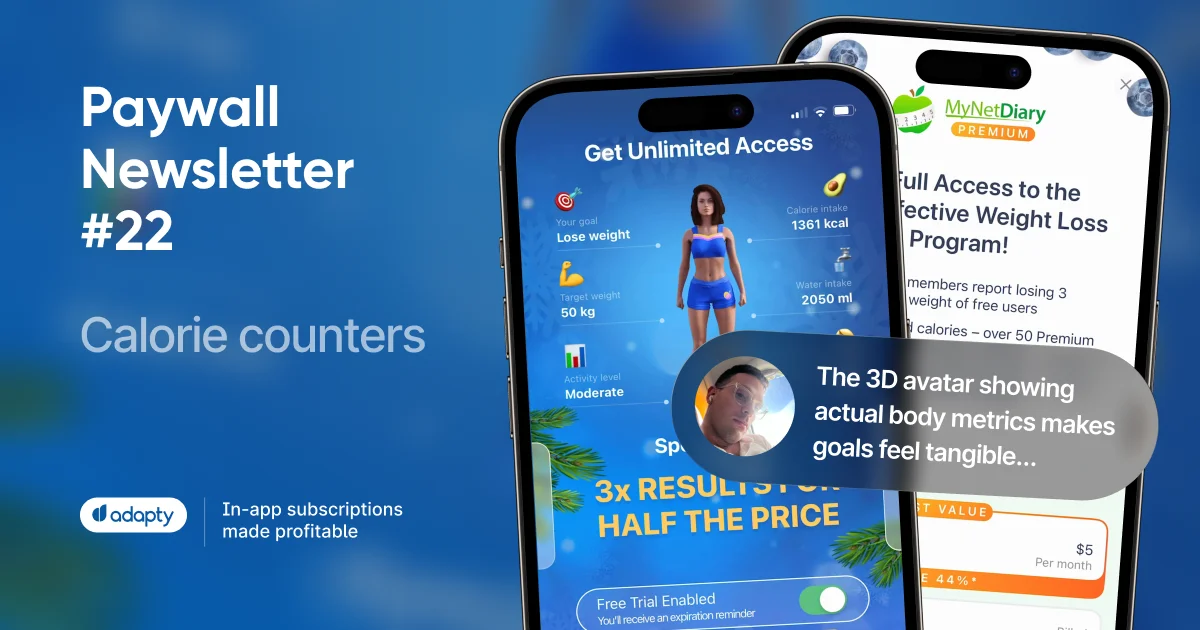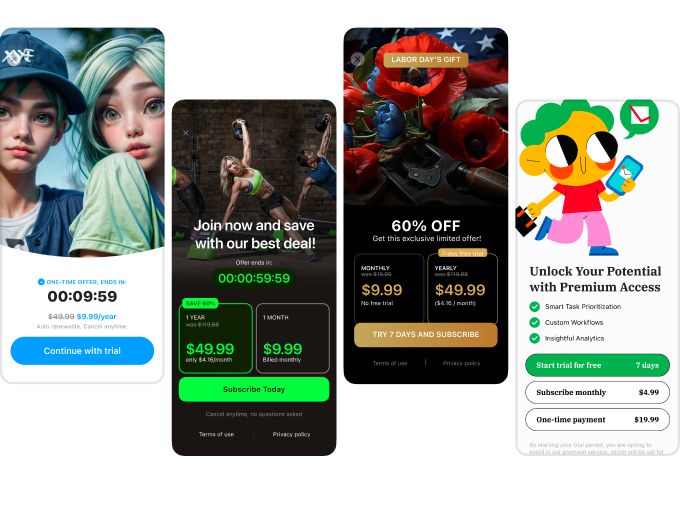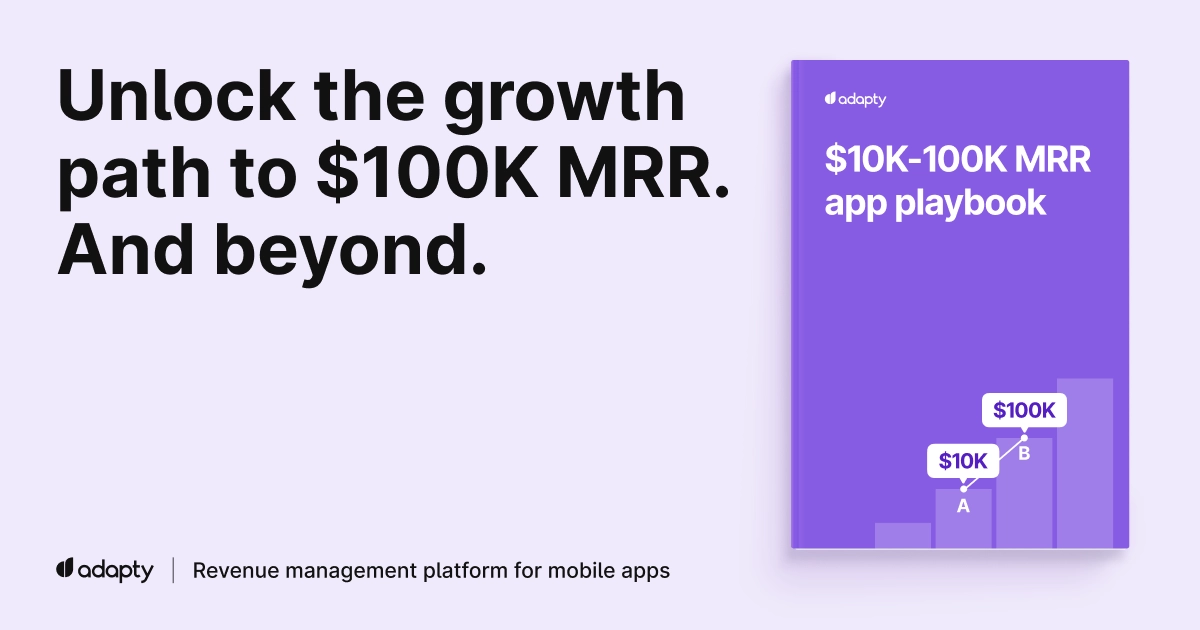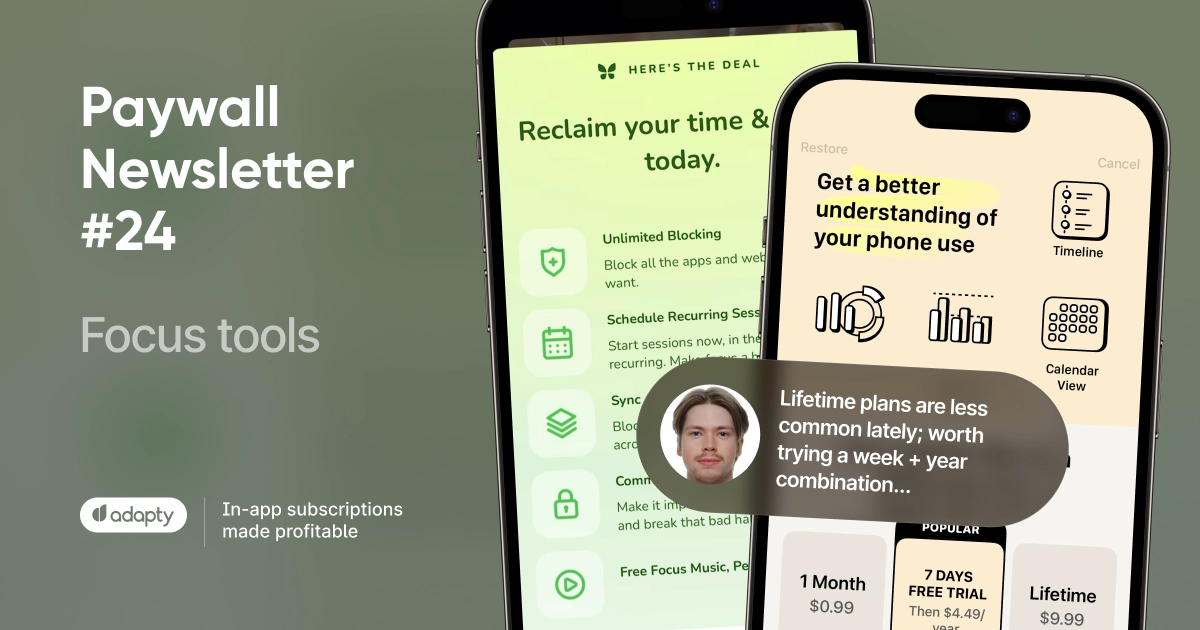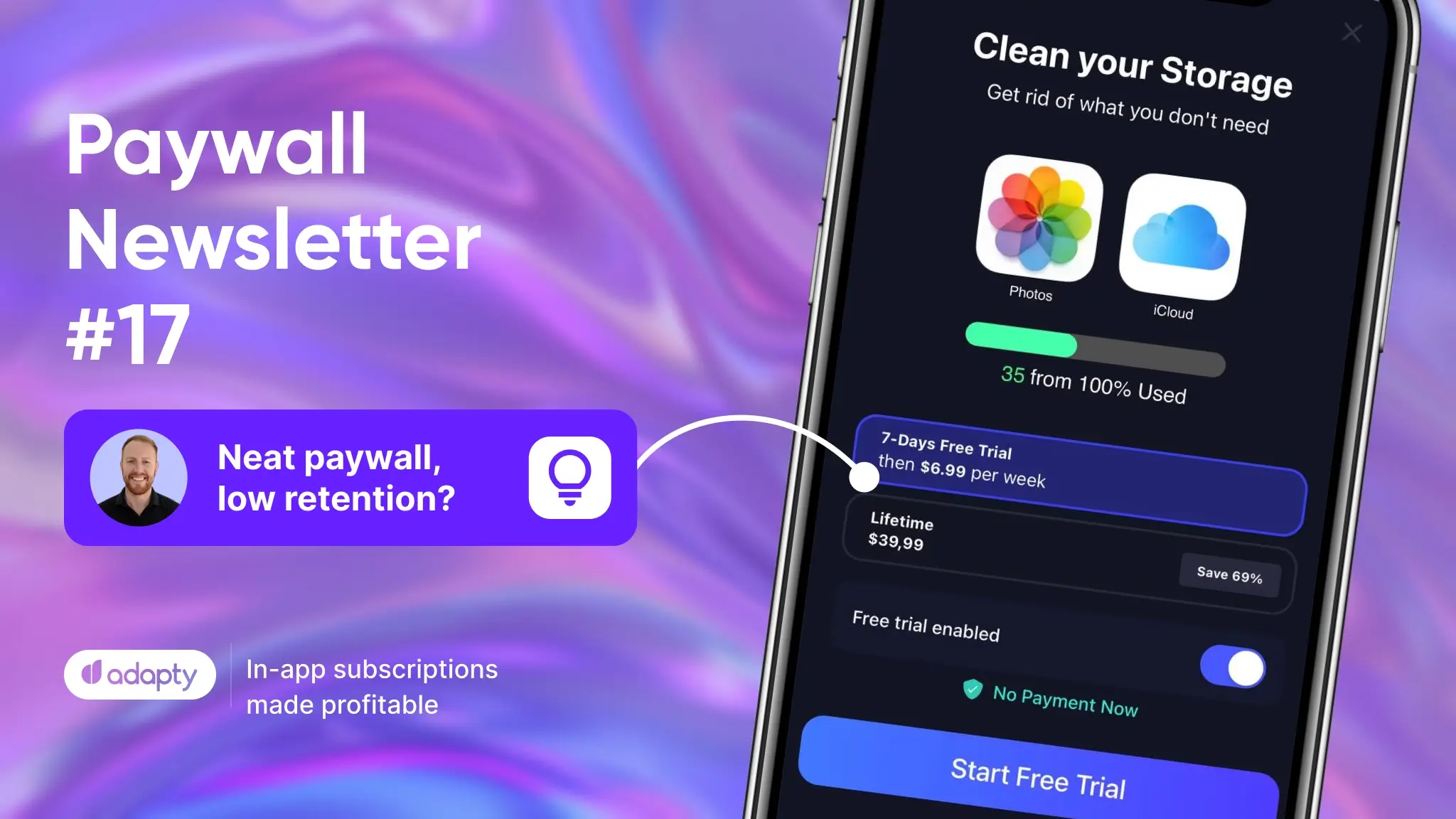The 22nd issue of the Paywall Newsletter is here!
Calorie counters are hot right now, and it’s not just the August sun.
Cal AI’s viral growth and impressive conversion rates have sparked interest in the niche. Established players and newcomers are now refining their monetization strategies.

We’ve asked Alex Vech from ScreensDesign to break down six top-performing calorie counter apps to see how they turn users into paying subscribers.
Grab a bite and let’s dive in.
MyFitnessPal: Calorie Counter
Last month revenue: $13M
Last month downloads: 1M
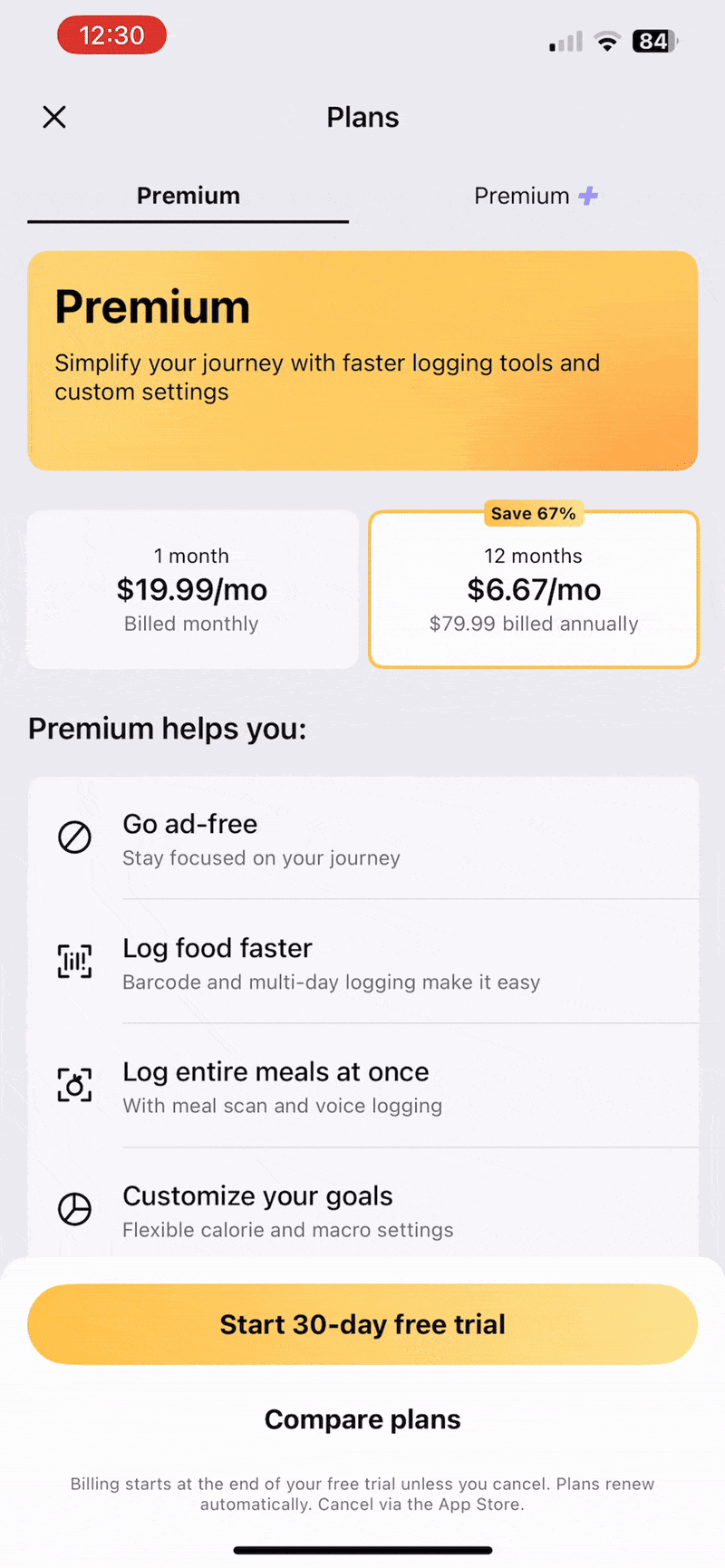
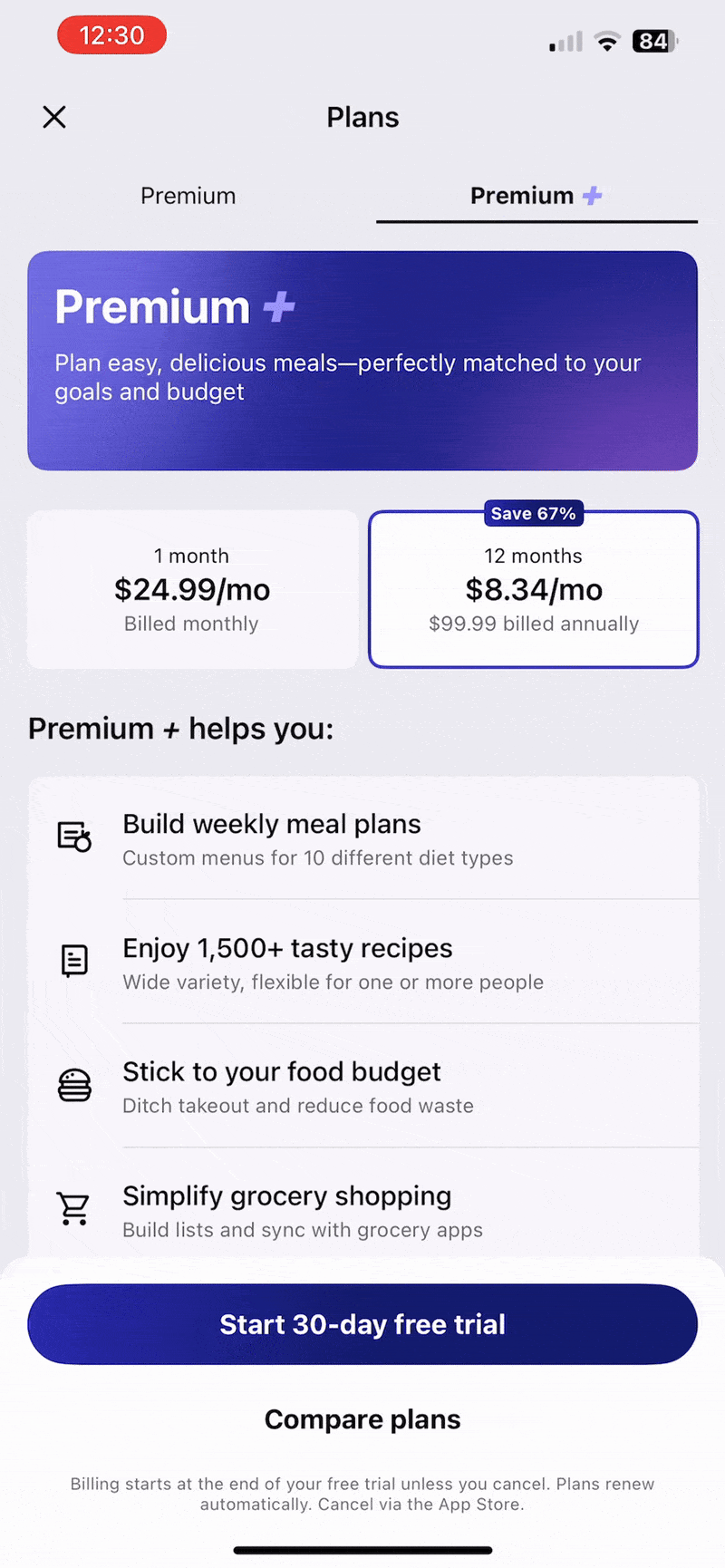
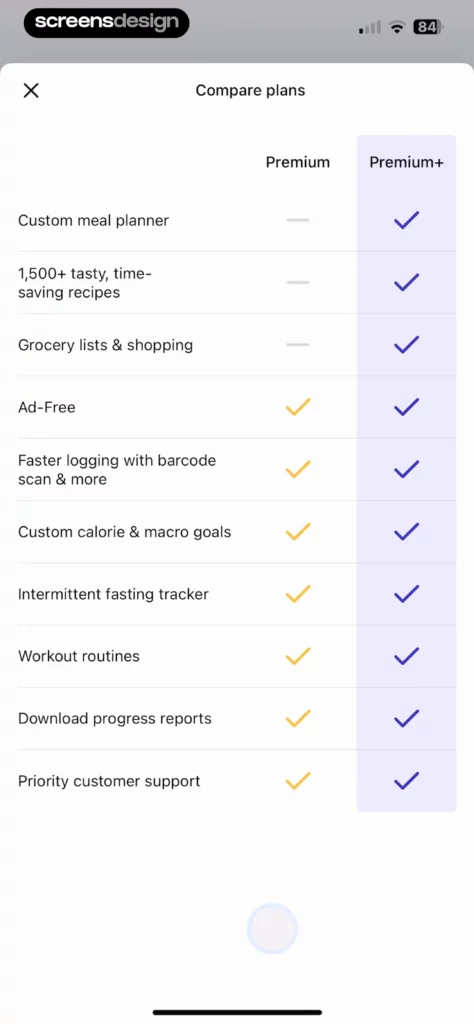
Setting the scene:
MyFitnessPal’s paywall is doing something smart – its premium features are logically tiered, not bundled into one expensive plan.
What’s working well:
- The Premium vs Premium+ split with distinct use cases works well.
- That 67% annual discount hits hard, making this choice a no-brainer.
What’s worth testing:
- $19.99/month might feel pricy; worth testing a $9.99 entry tier to capture more users.
- Social proof, like a “most popular” badge on a plan, could be useful.
Cal AI – Calorie Tracker
Last month revenue: $2M
Last month downloads: 800K
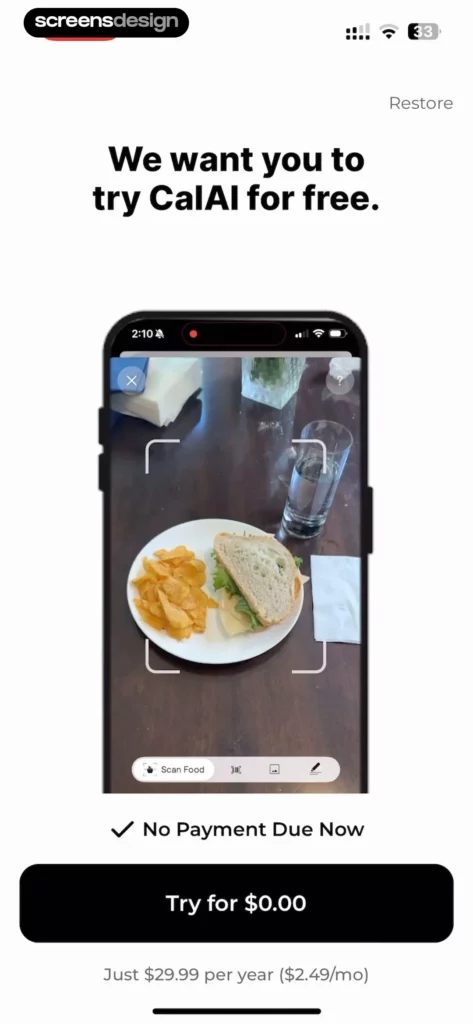
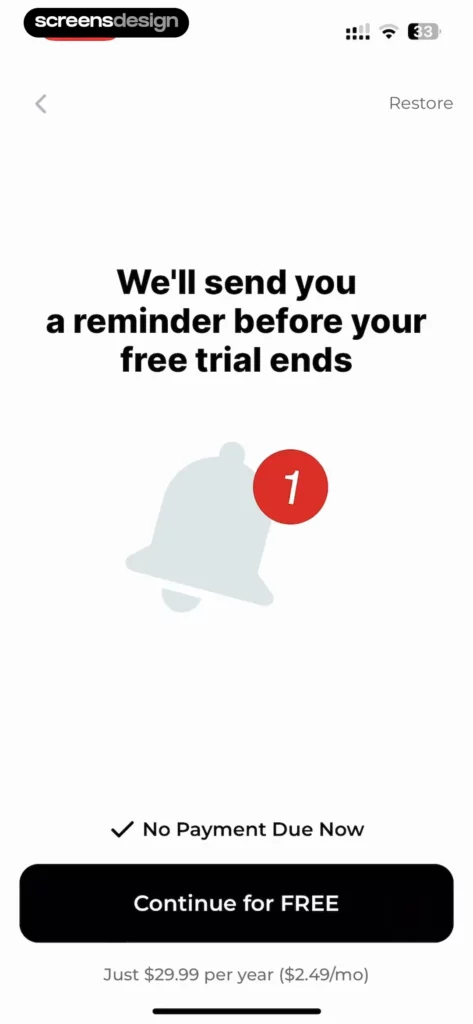
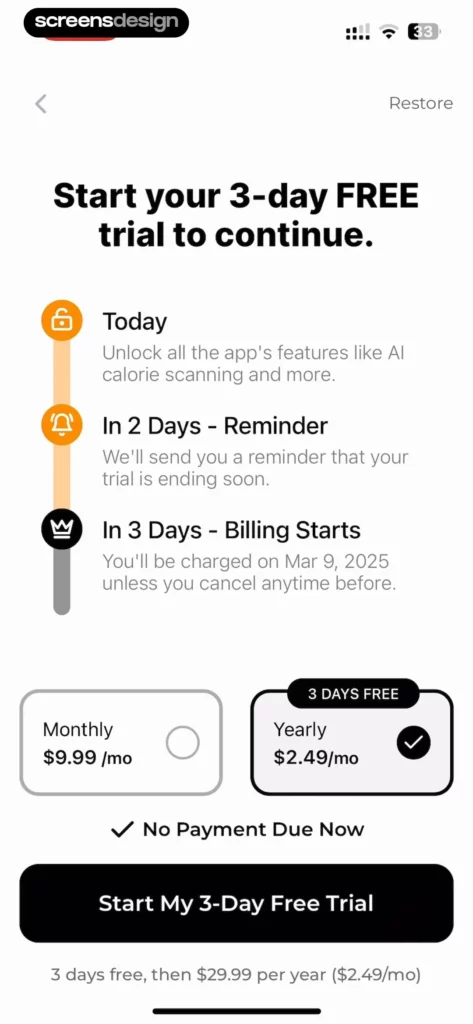
Setting the scene:
Cal AI nailed the trial flow. I’d call it a masterclass in reducing trial anxiety and removing every possible friction point.
What’s working well:
- The three-screen trial explanation is genius. Straightforward, no surprises.
- “Try for $0.00” emphasizes the no-cost aspect without commitment language 👍
- That yearly price ($2.49/mo vs $9.99/mo) makes the annual plan look like stealing. 75% off hits different than most apps’ 50%.
- Showing AI food scanning gives a taste of the core value prop before they even start.
What’s worth testing:
- Social proof, like user count or testimonials, can help build trust before the trial starts.
- “Continue for FREE” on screen 2 is redundant after “Try for $0.00.” Could use that real estate for feature highlights instead.
Aren’t subscribed to our Paywall Newsletter yet?
Get two fresh issues each month. Straight to your inbox.
Calorie Counter – MyNetDiary
Last month revenue: $1M
Last month downloads: 300K
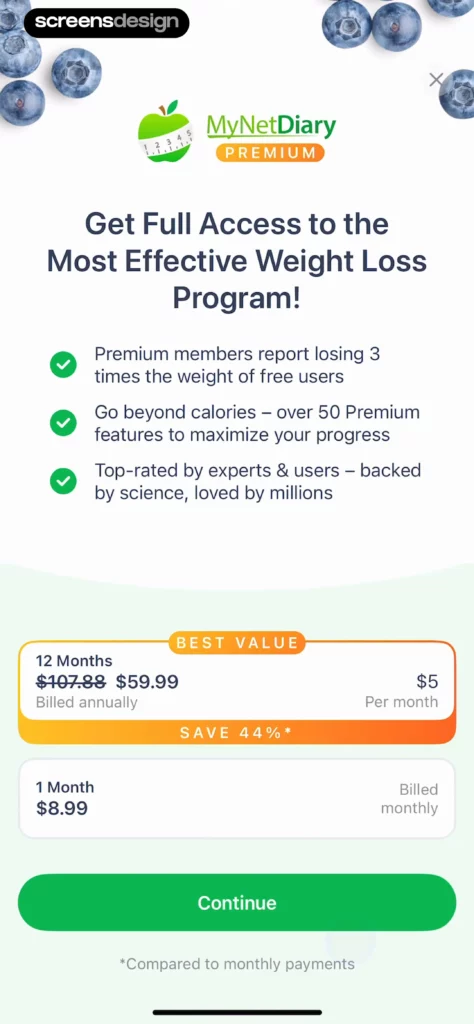
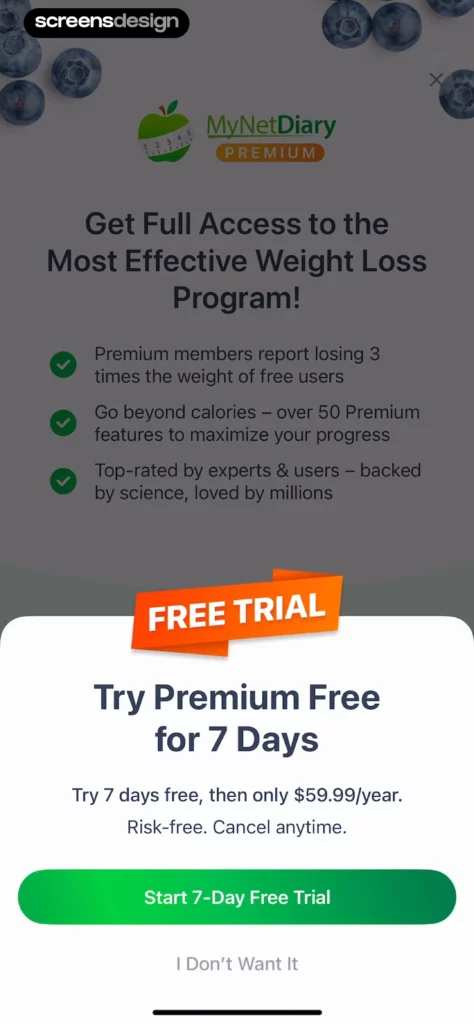
Setting the scene:
MyNetDiary plays the exit-intent game perfectly. When users try to bail on the first paywall, they get pulled into a softer trial flow that’s much harder to resist.
What’s working well:
- The hard sell → soft trial progression is psychology gold. First screen pushes the annual plan hard, then the exit flow offers a risk-free trial.
- Social proof with specific numbers beats vague claims every time.
- “FREE TRIAL” badge on the second screen feels like a reward, not a consolation prize.
- “Risk-free. Cancel anytime” removes the biggest objection.
What’s worth testing:
- $59.99/year vs $8.99 monthly makes the annual feel like the smartest choice. Testing a $6.99 monthly price could attract users hesitant to commit annually.
- “I Don’t Want It” button feels harsh. “Maybe Later” could work better to keep the door open for retargeting.
AI Calorie Counter – Appediet
Last month revenue: $500K
Last month downloads: 200K
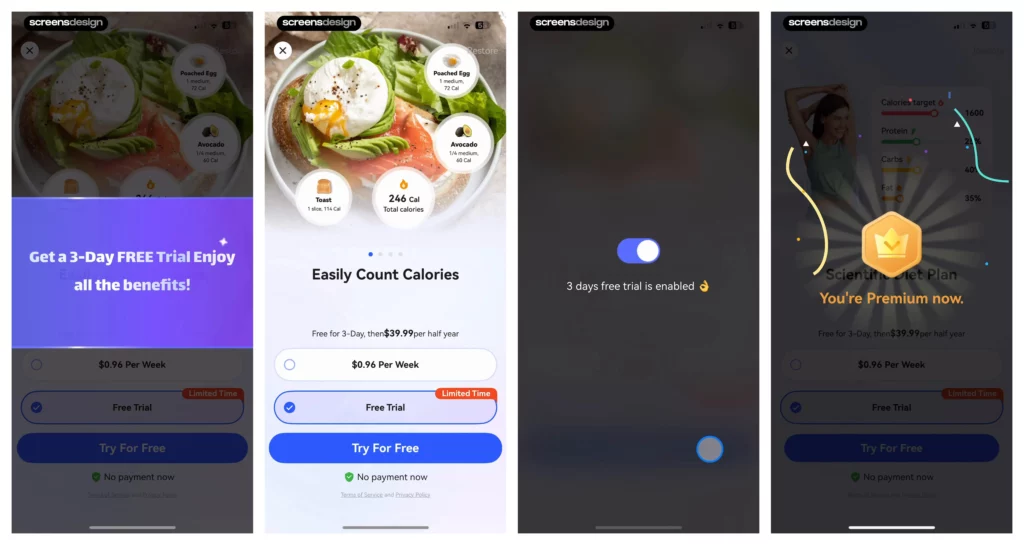
Setting the scene:
Appediet built their paywall like a product demo. Users see exactly what they’re buying through smooth animations and real interface previews before committing to anything.
What’s working well:
- The visual-first approach is brilliant, making the value instantly clear.
- Animation confirmations (“You’re Premium now”) feel rewarding.
- $0.96/week pricing is psychological gold and feels almost free, even though it’s $50/year.
- The 6-month option at $39.99 looks like a deal compared to weekly billing, even though it’s actually more expensive annually ($80 vs $50).
What’s worth testing:
- Weekly billing works for micro-commitments but might increase churn. Worth testing monthly at $3.99 to see if retention improves.
- The animations are smooth but might slow down impatient users. Try to A/B test a static version for speed vs. engagement.
- Social proof or testimonials could strengthen trust.
Cronometer: Calorie Counter
Last month revenue: $600K
Last month downloads: 200K
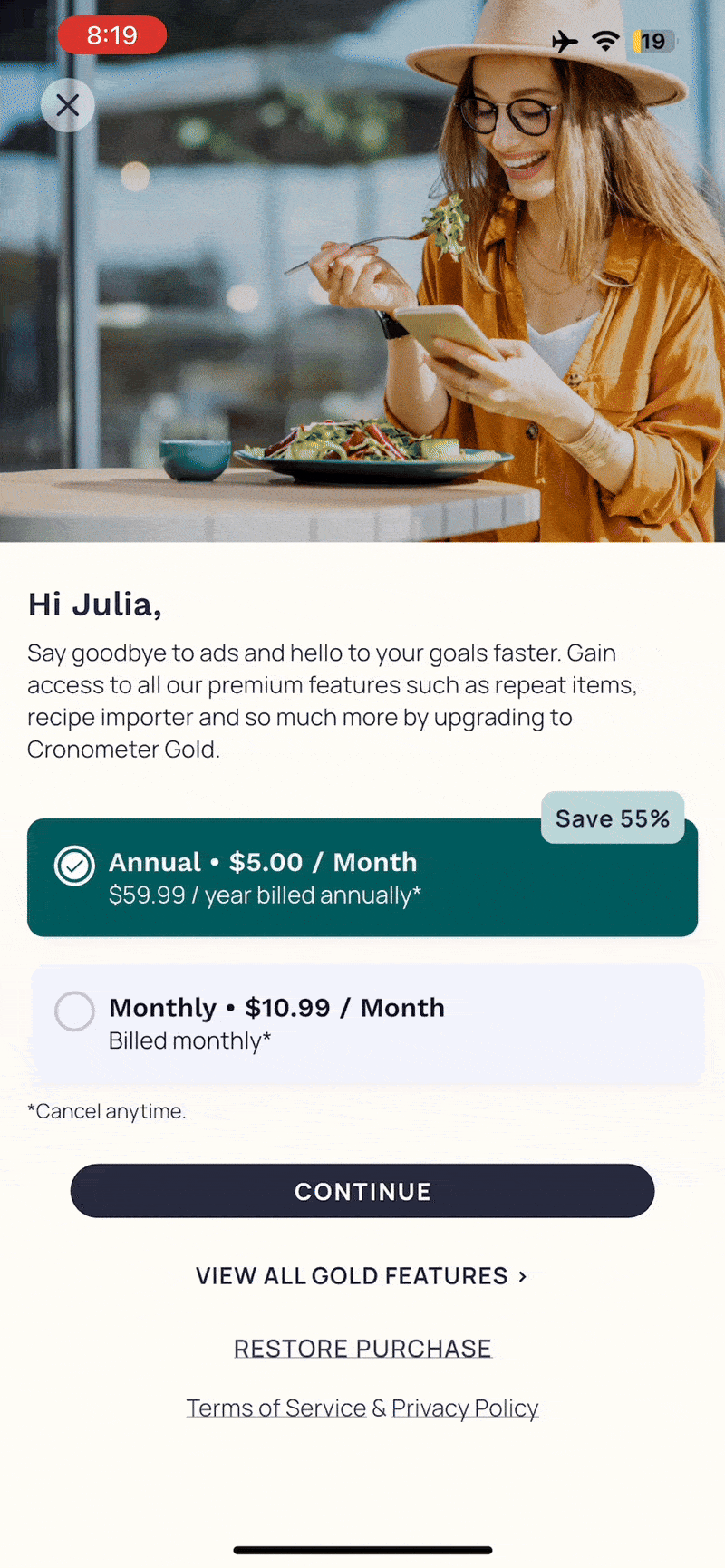
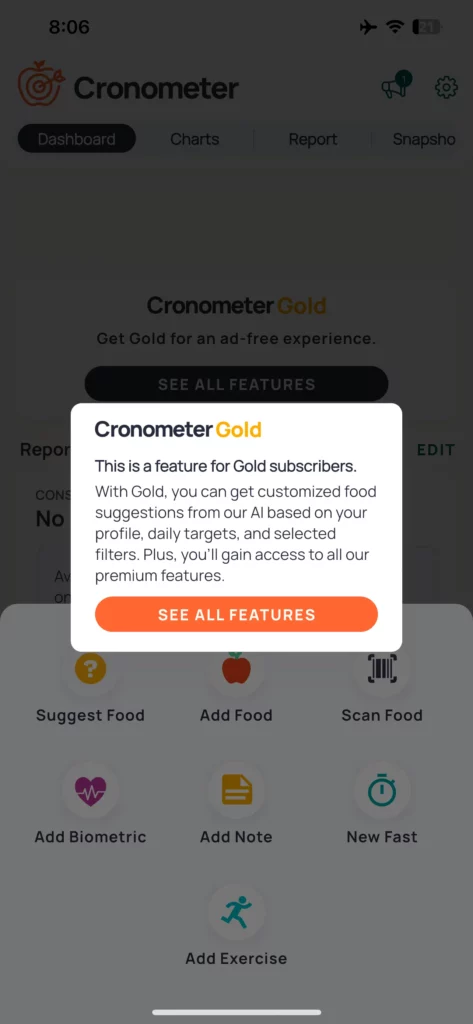
Setting the scene:
Cronometer takes a different approach – no hard paywall, just gentle nudges everywhere. Users can experience the free version, but they get reminders of what they’re missing.
What’s working well:
- Personalization makes the upgrade feel like a personal recommendation, not a generic sales pitch.
- The 55% annual discount creates urgency. $5.00/month vs $10.99/month makes the annual plan obvious without being pushy.
- In-app contextual prompts are brilliant – they educate about what Gold offers, not block all features.
What’s worth testing:
- The feature explanations are detailed but could use more urgency, like “Join 50K+ Gold users” or time pressure.
- $10.99/month is steep compared to competitors. Might be good to test a smaller price tag.
HitMeal Calorie & Food Tracker
Last month revenue: $400K
Last month downloads: 90K
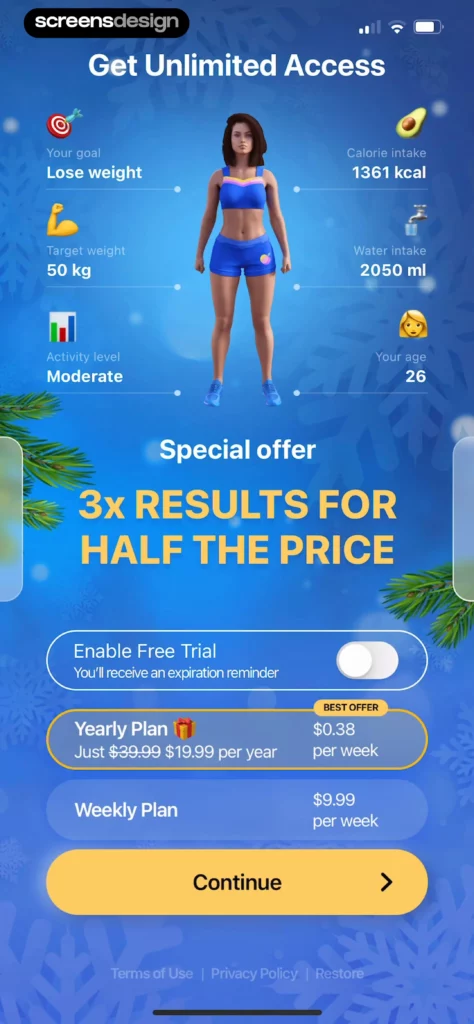
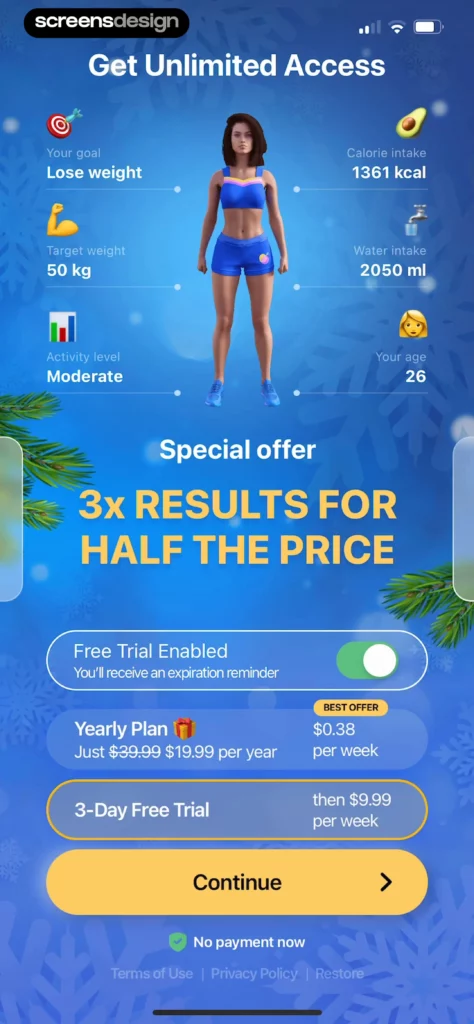
Setting the scene:
HitMeal went full gamification with their 3D avatar approach. It’s like looking at your fitness goals as a video game character – surprisingly effective for motivation.
What’s working well:
- The 3D avatar showing actual body metrics (weight, calories, water) makes goals feel tangible and achievable.
- “3x RESULTS FOR HALF THE PRICE” creates serious FOMO 👍
- Trial toggle is a brilliant UX – users can choose their comfort level (trial vs direct purchase) without leaving the screen.
- $19.99/year is competitively priced, while the weekly option at $9.99 makes the annual look like a steal.
What’s worth testing:
- Gamification may attract younger users, while a traditional “before/after” method might suit other demographics.
- Adding a countdown timer or “expires in 24 hours” to create scarcity can be a good idea.
- An option to personalize the avatar could increase emotional connection.
Bonus – what we see on Google Trends
If you search for “calorie counter” on Google Trends, you’ll notice a clear pattern: interest spikes every January.
But this year, something different happened. Cal AI’s success story went viral in March, driving even more attention to the app niche and surpassing the usual “new year, new me” surge in search interest.
So, if you see a competitor making headlines, don’t retreat. It might actually be the perfect time to double down on your efforts.
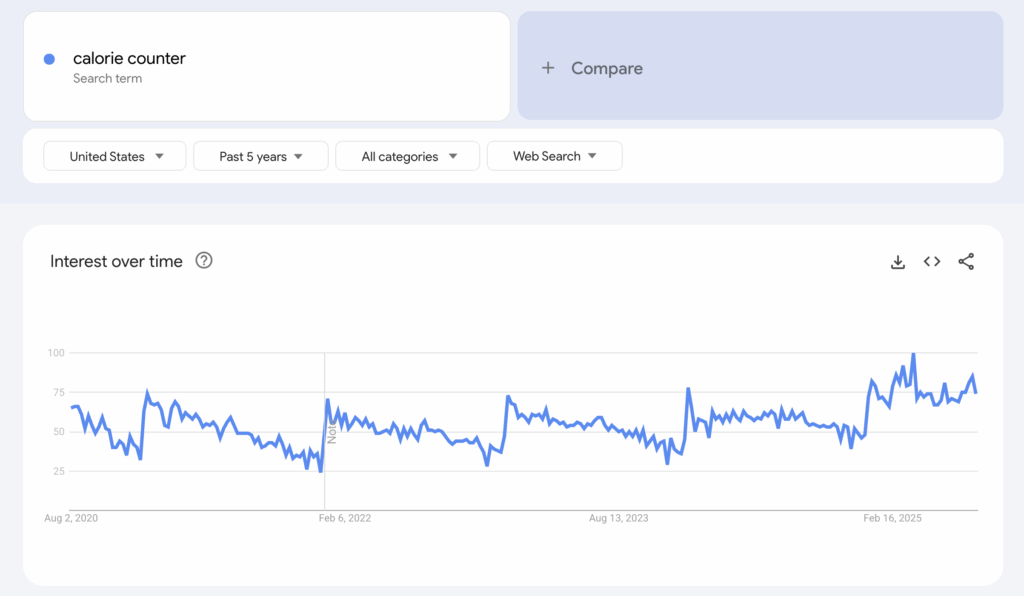
And that’s it for this issue.
Keep experimenting, keep growing.
See you soon,
Adapty team
